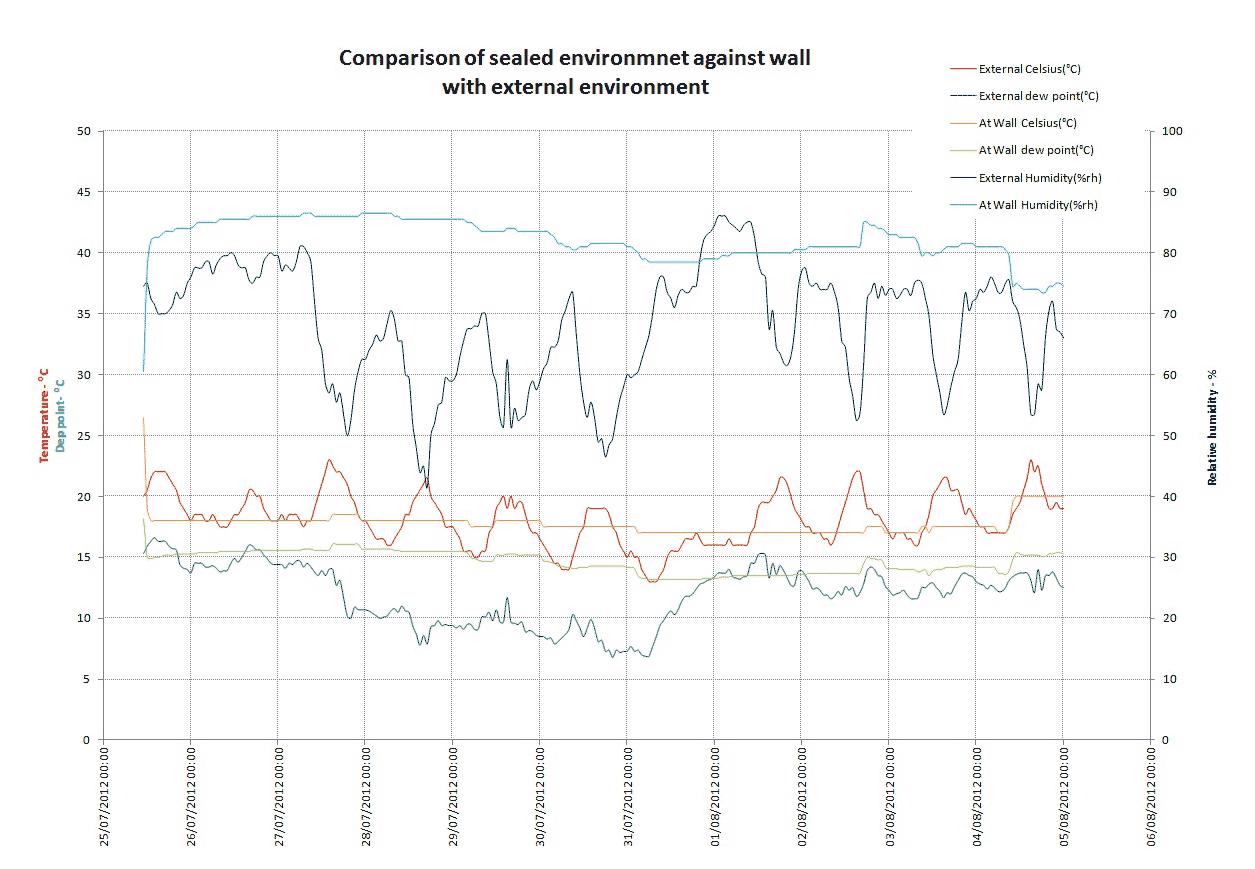The internal building environment is ultimately controlled by external conditions (daily and seasonal variation) and then by our attempts to counteract them through building materials and environmental control.
Where historic or existing buildings are subjected to a change of use, changes (sometimes imperceptibly small) to previously stable environments can precipitate various adverse responses in the building. Attempts to remediate without fully understanding all contributory factors often exacerbate existing problems and/or create new ones.
Residential Building Environments
In the case of occupancy within existing structures, the (perfectly reasonable) requirement that modern living standards and heating systems be introduced to an envelope originally built (or designed) with very different standards and systems in mind can result in the creation of very unhealthy conditions which might include:
- Formation of condensation, leading to:
- Mould growth and
- Spoiling of decorative surfaces.
- Inefficient energy usage.
Museum Environments
Maintaining suitable environments in which to store delicate items or retain delicate building finishes, especially where accessible to the public, can be very difficult to achieve without environmental monitoring and sensitive environmental control. Fluctuating environmental levels in a museum environment can produce those issues listed above, causing:
- Biodeterioration of fabrics and paint
- Deformation of fine joinery
- Build up of micro stresses in paint and plaster layers
Recording Environmental Levels
The most important variables with regard to buildings are temperature and how much moisture is in the air, or (relative) humidity. (Visible and ultraviolet light can affect sensitive objects and are often monitored – particularly in museum environments). These levels can be recorded at various points throughout a building space, with monitoring periods dependent on the particular situation. Monitoring is achieved through units the size of a small mobile phone. Data can be stored in the unit itself or relayed wirelessly to central storage either on or off-site for analysis.
The technology for recording, storing and relaying environmental data is evolving on an almost monthly basis, so ideally a phone conversation would be preferable to discuss any particular requirements.
Data is recorded and presented in such a way as to highlight a particular issue. For instance, the graph below was prepared to highlight the causal relationship between an external environment and condensation on internal surfaces.

